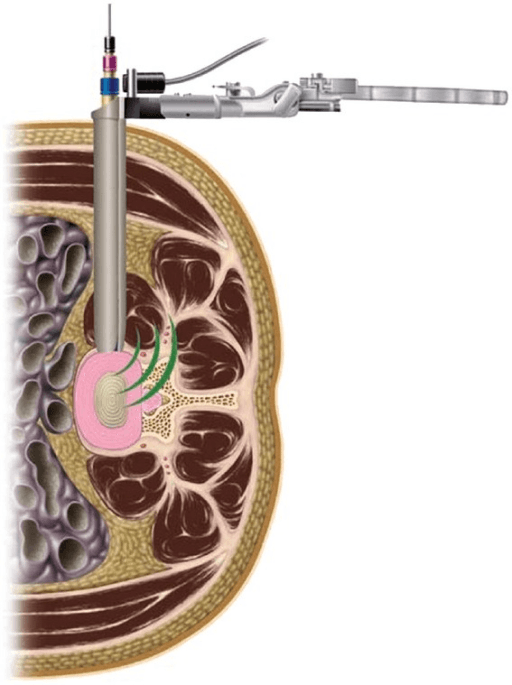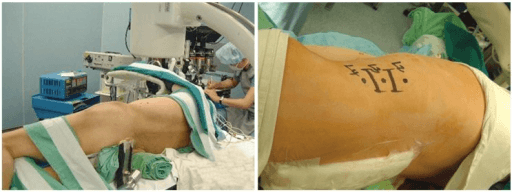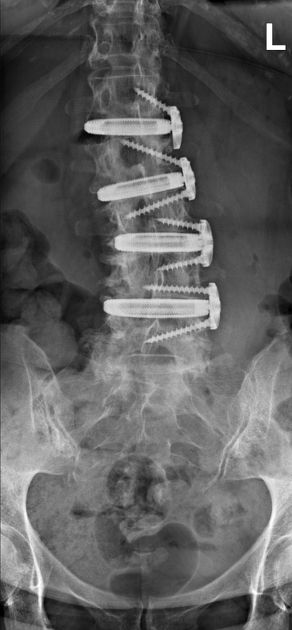Deciding on spinal surgery is a major step toward improving your quality of life. If you and your surgeon are considering Extreme Lateral Interbody Fusion (XLIF), you probably have many questions. While this minimally invasive procedure offers advantages like a quicker recovery, it's essential to have an honest and clear discussion about the possible risks. This post defines the XLIF surgical approach and outlines the seven key risks associated with surgical approach.
WHAT IS THE XLIF APPROACH?
XLIF is a type of spinal fusion performed from the side of the body. This lateral approach allows the surgeon to access the spine without cutting through major back muscles. During the procedure, the surgeon removes a damaged disc and replaces it with a spacer or cage filled with bone graft material. This encourages the vertebrae to fuse, creating a single, stable bone that relieves pain and corrects deformities.


SEVEN KEY XLIF RISKS AND COMPLICATIONS
Every surgical procedure carries risks, and XLIF is no different. Although the complication rate is relatively low, it's important to understand the potential issues. Your personal risk depends on factors like your overall health, age, and the specific reason for your surgery.
1. Nerve Damage and Neurological Issues
One of the most discussed risks of XLIF is nerve damage. The surgeon operates near a complex network of nerves called the lumbar plexus, which controls sensation and movement in your legs. The main nerve of concern in this area is the psoas nerve.
- Temporary Symptoms: The most common neurological issue is temporary thigh pain, numbness, or weakness. This often happens because the nerves are stretched or irritated during the procedure. These symptoms usually resolve on their own within a few weeks or months.
- Permanent Damage: While rare, permanent nerve damage is a serious risk. This could result in long-term weakness, numbness, or pain in the leg. Surgeons use advanced nerve monitoring technology (neuromonitoring) during the procedure to track nerve function in real-time and minimize this risk. It's vital to know the surgeon's experience and the specific techniques they use to protect these important nerves.
2. Infection
Infection is a risk with any surgery. It can occur at the incision site (superficial) or deeper in the body near the spine.
- Superficial Infections: These are typically treated with antibiotics and proper wound care.
- Deep Infections: A deep spinal infection is more serious and may require additional surgery to clean the area and, in some cases, remove the surgical hardware.
3. Blood Clots (Deep Vein Thrombosis)
Following any major surgery, there's a risk of developing blood clots in the deep veins of your legs, a condition known as Deep Vein Thrombosis (DVT). If a piece of the clot breaks off and travels to the lungs, it can cause a life-threatening pulmonary embolism (PE).
To prevent this, your medical team will encourage you to move as soon as possible after surgery. They may also use compression stockings, sequential compression devices, or blood-thinning medication to reduce your risk.
4. Hardware Failure or Fusion Issues
XLIF surgery relies on hardware like cages, screws, and rods to stabilize the spine while the bones fuse.
- Hardware Malposition or Failure: In some cases, the hardware can shift, break, or become loose. This may require a second surgery to correct or replace the components.
- Non-union (Pseudoarthrosis): This occurs when the vertebrae fail to fuse into a solid bone. It can lead to persistent pain and may necessitate another operation. Smoking is a major risk factor for non-union, as nicotine restricts blood flow and hinders the bone's ability to heal.
5. Vascular Injury
The surgical path is close to major blood vessels. Injury to these vessels is a rare but serious complication that could cause significant bleeding.
6. Bowel or Ureteral Injury
Because the surgeon accesses the spine from the side, there is a very small risk of injury to abdominal organs like the bowel or ureter.
7. Subsidence
This is when the implant or cage sinks into the adjacent vertebral bone, potentially leading to a loss of spinal correction.
Deuk Makes the Difference
XLIF is a minimally invasive procedure, but it is still more invasive than the Deuk Spine Institute’s proprietary Deuk Laser Disc Repair (DLDR). DLDR is performed without cutting or damaging healthy muscle, fascia, or bone, without using risky hardware, and without post-operative pain. Unlike XLIF, there are no complications. Best of all, the DLDR procedure takes less than an hour, and recovery takes less than three days.
Our success rate is 99.5%, and we have treated thousands of patients who are now living pain-free.
Make Your First Pain-Free Move
If you’re seeking relief from lumbar pain, have been recommended for a XLIF spinal fusion, or are still dealing with chronic neck pain after a failed fusion surgery, we can help improve your quality of life and enable you to live pain-free.
Upload your latest MRI for a free review and a personal consultation with acclaimed spinal surgeon Dr. Ara Deukmedjian, M.D., founder of Deuk Spine Institute and creator of the Deuk Laser Disc Repair® procedure.
